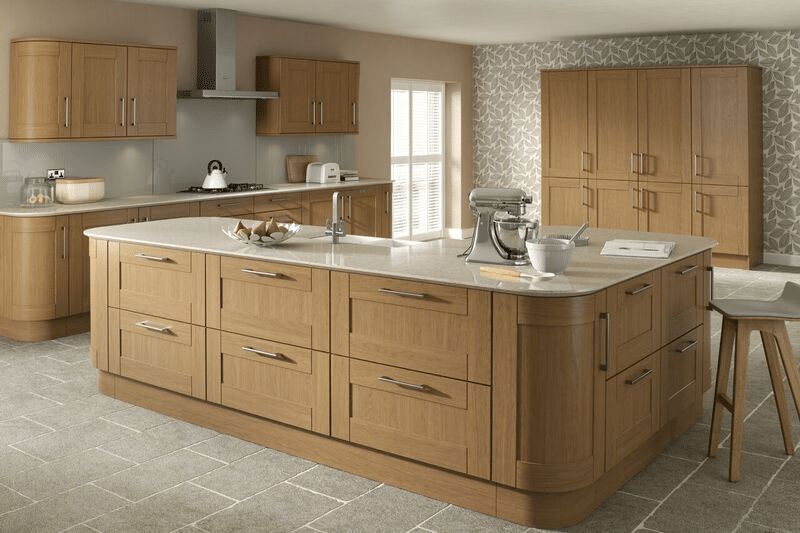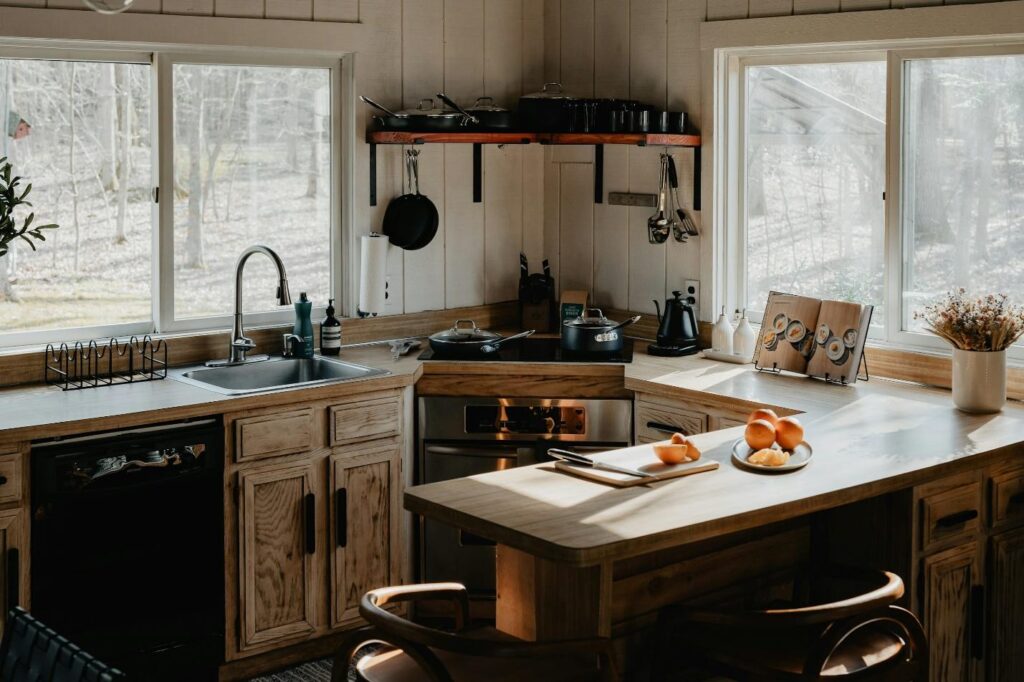There are dozens of reasons why solid wood is famously expensive: it’s scarce and grows slowly, harvesting it implies huge costs and patience, everyone wants it for its durability, and there’s a shortage of labor to support the high demand that presses this industry.
And more likely than not, there are even more reasons why you’d go to great lengths to keep your solid wood pieces in tip-top shape for as long as possible, whether they’re made of softwood or hardwood.
If you’re the privileged possessor of a kitchen cabinetry set made of solid wood, you know there are hardly any better purchase choices on the market that are better – that is, unless you invest in a new kitchen. However, if you’re looking for ways to care for your existing one, we’ve compiled a list of tips that will serve you well in the future. Let’s get it started, shall we?
Worktops Hate Excessive Cold or Heat
Just like your skin reacts negatively to excessive heat or cold (which is why you need SPF or good hydrating cream), your solid wood worktops will express their discontent with extreme temperatures. Such conditions can cause humidity levels to vary across the kitchen, creating a tension difference within the material and thus making it more prone to cracking or deforming.
This isn’t always the consequence, but you don’t want to take useless risks. Prevention is always better than cure, which is why you want to do what’s necessary to keep moisture levels equilibrated.
You can install moisture-blocking systems around areas prone to moisture, such as the washing machine, dishwasher, or sink. Heat doesn’t only come from the oven – hot pots, pans, and dishes are also your wooden furniture’s enemy.
Avoid placing hot pans and pots directly on worktops; instead, use stainless-steel hot pads or heat-proof trivets. Make a point to avoid placing metal containers made of copper, iron, aluminum, steel, or tin for extended periods, as they can leave stains over time. Keeping your wooden worktops fresh boils down to forming a few precautionary habits.
But They Love a Good Coat of Oil
From the same “wood worktop upkeep is simple” series, we’re reminding you to oil your work surfaces according to their needs. Wood is a natural material; therefore, it has different maintenance requirements compared to other vended materials, like laminates.
Regular oiling is a good maintenance practice if you plan on keeping your solid wood kitchen in top shape in the long run. Wood naturally expands and contracts due to humidity and temperature fluctuations, but oil creates a protective barrier against spills, moisture, and the everyday wear it’s prone to.
Without this protection, the surface can dry out, tarnish, or even develop cracks as time goes by. Oiling doesn’t just nourish the material; it also enhances its natural texture and provides it with a warm, rich finish that becomes increasingly beautiful over time. Consider it skincare for furniture – a little can go a long way in keeping it healthy, glowing, and good-looking.
You’ll Still Have to Protect Surfaces

If your furniture is brand new and hasn’t yet developed its character, it may need a little extra care, at least until you understand what it requires or until the oil has caught onto the surface. Oil protection can build up in the first weeks, so anything that touches it, from spills to food, can leave marks if remedied too late. Wipe up the stains straight away and you’ll thank yourself for it – as your worktop will.
How do you know when it’s time for a fresh coat? You do the water test. Pour a bit of water onto the surface: if it creates a droplet, your kitchen is just fine, but if it dissipates, it might be time you threw another oil coat.
Use One Product at a Time
It might seem perfectly wise to combine what’s left at the bottom of your bottles in one container and clean your cabinetry with the new kitchen cleaner 2.0 that results. But this might strip your kitchen’s coat away and damage your furniture as a result of the multiple chemicals combined.
Please, only use one product – one that’s specially made for your furniture. And when you come across those how-tos, DIYs, and lifehacks on TikTok or other social media platforms that encourage users to try their recipes (for disaster) as if they’re chemists, remember that they lack expertise.
Some creators stage results, while others create toxic gases by mixing products like vinegar and bleach, and hide the reality from the camera. Many would go to great lengths to boost their following. You’re not a test subject, so stick with what’s safe.
Understanding Your Cabinetry
There are multiple types of wood, each with its own maintenance requirements, which is why you’ll need to learn yours in order to offer it the care it needs. The finishes used, the type of timber used in the kitchens, and the environment they’re left in all influence how cabinetry behaves over time. Birch, cherry, oak, and maple are staples in timber kitchens, and each comes with a different durability capacity.
Similarly, the finish makes a huge difference: lacquer is gentler and needs more careful cleaning, while polyurethane is more stain-proof.
Keep the Wood Dry
If there’s one rule for wooden worktops, it’s always keeping them dry. Moisture and spills naturally occur in kitchens, and failing to wipe them away promptly can cause significant damage to the surrounding wood. Wipe up any liquid ASAP, especially around the sink, where splashes are most likely to occur.
Damp wood can bend, darken, or even rot if left neglected for too long, so taking action quickly will go a long way in preserving your kitchen’s integrity in the long run.
Last Tip: Seasonal and Yearly Upkeep.
It’s not enough to clean your wooden kitchen just once a week; the best thing you can do is create and stick to a seasonal and/or yearly care routine. Every year, add a nourishing conditioner or polish to prevent drying and cracking, and check for water damage, mould, scratches, loose hinges, or insect infestations. Consistency will help you prevent repairs and prolong your wooden kitchen cabinetry’s life.

